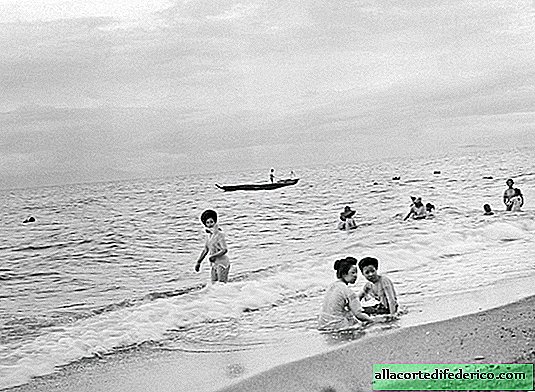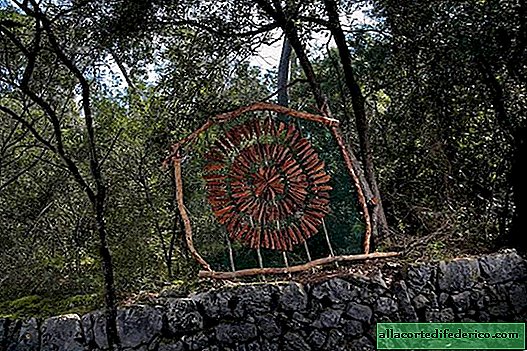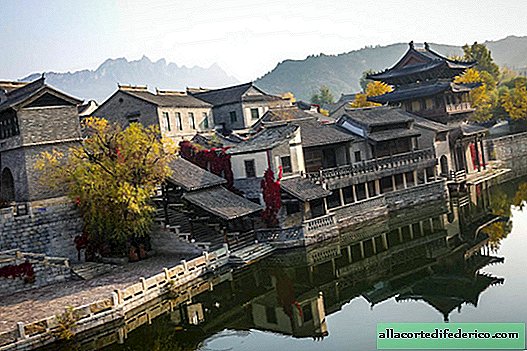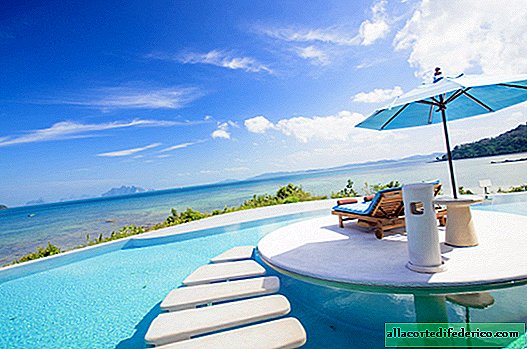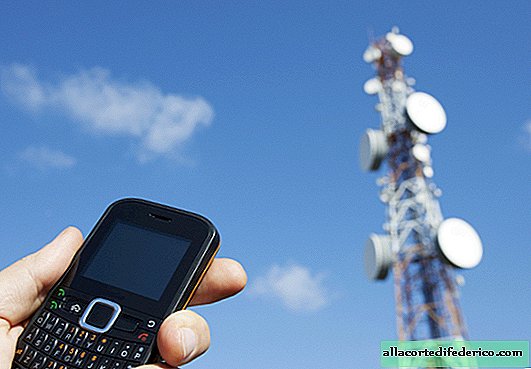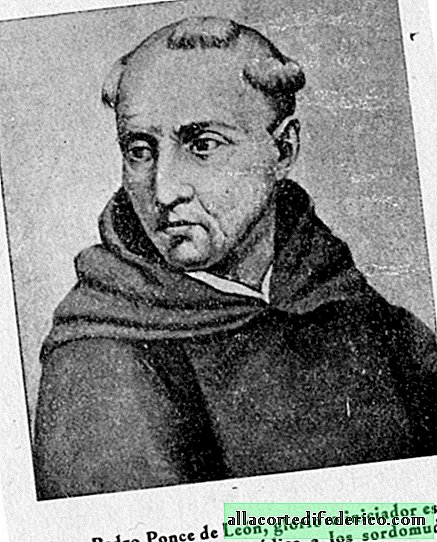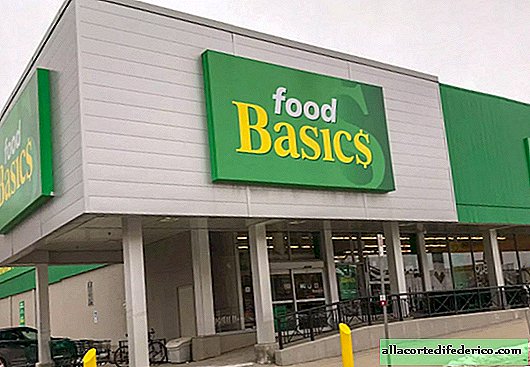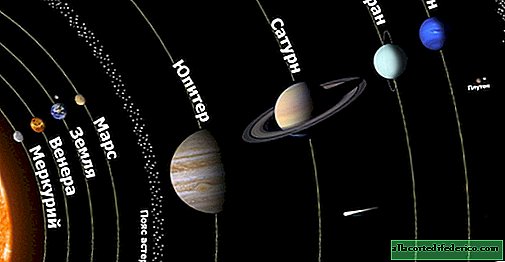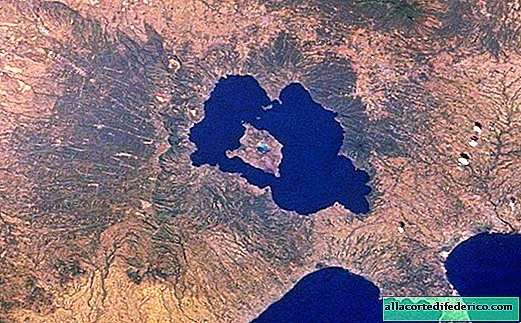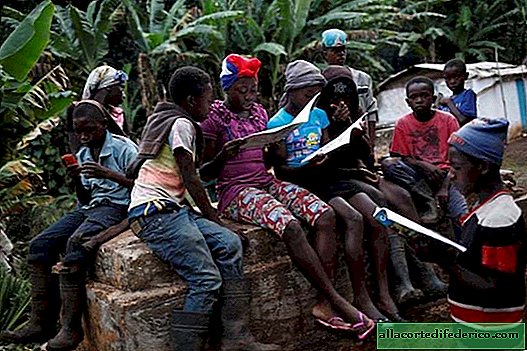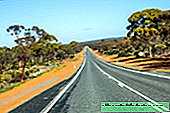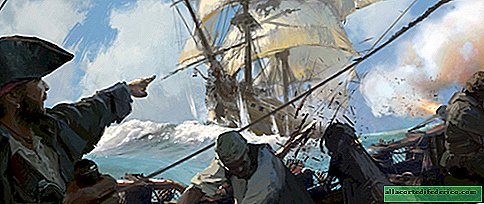Liege
Liege is the capital of the Belgian province of the same name and the main city of the agglomeration. Liege can be considered the cultural capital of Wallonia, despite the fact that officially it is Namur. And although the city is known mainly for its past industrial development (it lost it due to the subsequent decline in development), today it is still the owner of a rich history, culture, amazing location on the river Meuse and a large habitat students. Now the city is developing very rapidly, and there is a chance that in the future there will be even more reasons to visit it!

General information
The population of Liège is about 200,000 people. It is located not very far from the border and is only half an hour from the Dutch city of Maastricht and the German city of Aachen.
The city gained significance during the Middle Ages, when it was the capital of the Liege bishopric (which remained independent until the French Revolution of 1789). It actively developed in the 19th century, in connection with which it became one of the first industrialized regions in the world (coal and steel) outside the United Kingdom. This circumstance led to the arrival in the city of a large number of Italians, who now make up 5% of the population. Modern Liege is a place of residence for people of various nationalities.
The city center is a rather interesting combination of historical areas with buildings of the 1960s and 70s, as well as buildings of the 19th century. Plus, there are tall apartment buildings (including Art Deco buildings), the Meuse River, and several pretty parks.
The suburbs of Liège can be divided into three equivalent parts: the extensive industrial complex around Erstal on the banks of the Meuse River in the northern part of the city and Seren in the south of Liège, the territory of workers on the eastern side of the river and the leafy area on the hills of the city in the western and southeastern parts of the city.
Liege is located in a delightful place, at the junction of the regions of Ardena, Kondroz, Erv and Hespengau (Esbe). Some buildings of the University of Liège are built on Sart-Tilman, which is located on the edge of a hill, in the forest. In Liège, the Urt River flows into the Meuse, and Fesdre flows in the former district of Chenet.
Liege may not belong to the type of cities that are popular with tourists, but you will be surprised to feel its special atmosphere and meet the friendly open locals who enjoy life.
As in other areas of Belgium, finding a good place for a snack in Liege is not difficult, and the 44,000 students living there will ensure an active nightlife, even on weekends!
You can book a hotel in Liège at a booking - here, you can compare prices from different sites here. For those who like to stay with private owners - here you can search for offers for renting apartments and rooms.

Language
The native language for most residents of Liege is French. There are also many people in the city who speak Italian and Spanish, and there are more of them than those who speak Dutch, the second most important language in Belgium. Some students have a native language - German, as a German-speaking population lives in the eastern part of Liège province. Very few speak and understand English.
How to get there
By plane
Brussels Airport is the best place to get to Belgium. And from there you can get to Liège by train from the Louvain / Leuven or Brussels-North stations.
Charleroi's Brussels Airport, located in Charleroi, 60 km south of Brussels, is a central destination for low-cost airlines such as Ryanair or Wizzair. You can monitor tickets, for example, here. On the street, next to the departure hall from the airport, you can take the city bus on line A to the Charleroi-Sud station for 3 euros. From the station every hour (from 05:00 to 23:00) trains leave for Liège. Travel time will be approximately 1 hour 10 minutes.

Maastricht Aachen Airport is 40 km from Liege, next to the Dutch city of Maastricht. The airport serves some flights of the low-cost airline Ryanair. You can get to Liège by bus going to Maastricht, or by train.
Cologne / Bonn Airport serves Wizzair flights. Located from Liège, one and a half hours by train.
Frankfurt Airport It is connected to the Liège-Guillemins station in Liège by a railway for high-speed trains that run daily, three times a day. More often trains run in Cologne, which is on the way.
By train
The main railway station of the city, Liège-Guillemins, is located in the southwestern part of the city. The station is served by trains from Thalys (an international operator of high-speed trains - approx. Per.) And ICE (InterCityExpress) in the directions: Brussels, Paris, Aachen, Cologne and Frankfurt.

Direct intercity trains run every hour from Brussels (1 hour), Namur (50 minutes), Aachen (50 minutes) and Luxembourg, while regular regional trains leave from Maastricht (30 minutes) and other cities.
Liège-Guillemins is three km and a 20-25 minute walk from the city center. The easiest way (in addition to walking) to the center is by regional train, which stops at Liège-Palais station (6 minutes, direction: Erstal, Lear). The ticket purchased for the train to Liege, you can also use on this train.
Alternatively, you can get to the center by buses number 1, 4 (direction: Opera) or number 48 (direction: Place Saint-Lambert / Place Saint-Lambert) for 1.40 euros per one end: A taxi ride will cost you 8-10 euros.
By bus
The transport company Eurolines works well in the city. Bus tickets can be bought either on the company's website or in its office on rue des Guillemins, next to the station.

By car
Liege is located at the crossroads of several important freeways. From it "branch" 6 roads:
- E25 southward leads to Luxembourg and the French cities of Metz, Nancy and Lyon.
- E42 to the west crosses most of Wallonia, passes by the cities of Namur, Charleroi and Mons, and then takes the direction to Valalien and Paris, France.
- E40 leads west to Brussels and the Belgian border.
- E313 leads to Antwerp and coastal cities in the northwest of the Netherlands.
- E25 to Maastricht (30 km) and other cities in the north of the Netherlands.
- E40 leads to the city of Aachen (Germany) and goes further east.
- E42 leads south to the city of Batis, and then to the cities of Verviers and Trier (Germany).
Liège is marked on many motorway signs. If you are traveling from Germany and the Netherlands, simply follow E25 and then follow signs for the center, exit the Angleur and follow the Center direction or take the Liège Center motorway ) if traveling from Luxembourg. And finally, if you are coming from Paris, Antwerp, Brussels or the city of Lille, follow signs for Luxembourg until you reach the Liège-Center exit. Note that on the Flanders freeways (an area in France, Belgium, and the Netherlands), Liege is spelled "Luik."
By ferry
People arriving in the city on their boat can stay at the Port des Yachts.

A large number of cruise liners from Maastricht stop at Quai Van Beneden.
hint: Liege - time is now15: 0713 OctoberDifference in hours: Moscow & plus; 1 Kazan & plus; 1 Samara & plus; 2 Yekaterinburg & plus; 3 Novosibirsk & plus; 5Vladivostok & plus; 8When is the season. When is the best time to go?
Liege - monthly weather
tip: Liege - weather for the months of January January ± 1.0 February ± 1.6 March ± 4.6 April ± 7.8 May ± 12.0 June ± 14.8 July ± 16.6 August ± 16.3 September ± 13.4 October ± 9.7 November ± plus 4.8 December & plus; 2.4The main attractions. What to watch
Museums Which are worth a visit
- Aquarium Liege is located in the same neoclassical building as the Museum of Science (Maison de la Science) and the Zoological Institute (Zoological Institute). The aquarium is the most visited museum in all of Wallonia, as well as one of the most inexpensive places where you can see a shark that eats people! Address: Kwai Van Beneden. Opening hours of the aquarium and museum: Monday to Friday from 09:00 to 17:00, during school holidays from 10:00 to 18:00, on holidays from 10:30 to 18:00. Ticket price - 5 euros. +32 (0) 4 366 5021. House of Science: strictly defined visiting hours, entry price - 3 euros. +32 (0) 4 366 5015.

- Archaeological Forum - a place where three cathedrals, built one after the other on this spot, are presented to the public, as well as buildings that remained from the time of the Roman Empire. Place Saint Lambert. Opening hours: from Tuesday to Saturday from 10:00 to 18:00, on Sundays from 11:00 to 18:00. Monday is a day off. Guided tour costs € 5.50.
- Bal (Museum of Walloon Art) is located in an ugly building, built in the 70s of the 20th century, which spoils the view of the place Hors-Château. Despite this, the museum has a permanent collection of paintings from different periods and exhibitions. Address: 86 En Féronstrée Street. Opening hours: Tuesday to Saturday from 13:00 to 18:00, Sunday from 11:00 to 16:30. Monday is a day off. Entrance ticket price is 3.80 euros. +32 (0) 4 221 9231.

- Cite des Mirors (Cité des Miroirs) - The recently renovated Art Deco pool. There are exhibitions of photography.
- Curtius Palace (Curtius Palace) is an eight-story imposing building, which, since the beginning of the 17th century, a wealthy arms dealer used as a storehouse. The nearby Hôtel de Hayme de Bomal Hotel (8 de Maastricht and 122 Feronstri Street) used to be an official building under French leadership, and Napoleon was received there twice. These two historic buildings, along with several others, form the basis of the Museum Grand Curtius Museum, which is famous for its paintings and historical collections.
- Former Hotel d'Ansemburg today is a museum. You need to visit it to see a well-preserved setting. Address: En Feronstrée 114. Opening hours: Tuesday to Sunday from 13:00 to 18:00, closed on Monday. Entrance ticket price is 3.80 euros. +32 (0) 4 221 9402.

- Gretry Museum. Address: 34 des Récollets street. Hours: Tuesday, Friday from 14:00 to 16:00, Sunday from 10:00 to 12:00. +32 (0) 4 343 1610.
- Museum of Religious Art. In the future, they plan to combine it with the Grand Curtius Museum, but today it can be visited separately. Address: Mer-Dieu street (rue Mère Dieu), 1. Opening hours: from Tuesday to Saturday from 11:00 to 18:00, Sunday from 11:00 to 16:00. Monday is a day off. Ticket price - 3.80 euros. +32 (0) 4 221 4225.
- Chanche Puppet Museum It is dedicated to the mascot of the city and the main character of the performances of local puppet theaters. Address: Surle Street (rue Surlet). Opening hours: Tuesday, Thursday and all Sundays of the year, except July 14:00 to 16:00. +32 (0) 4 342 7575.
- Museum of Public Transport located in the Vennes area. Address: 9. Richard Heintz Street, 9. Hours: from March 1 to November 30, on weekdays from 10:00 to 12:00 and from 13:30 to 17:00. On weekends and public holidays from 14:00 to 18:00. Admission is 5 euros for adults and 2 euros for groups of people.

- Museum of Walloon Life - Ethnological Museum, located in the old building of the former convent. In 2008, reconstruction was carried out. Address: Cour des Mineurs. +32 (0) 4 237 9040.
Tourist streets
The city center can be divided into two parts, between which are the Place Saint-Lambert (Place Saint-Lambert) and Leopold street (rue Léopold). Plus, there are some more places and attractions that are also worth seeing.

Ors Chateau
The northern part of the city center - known as the Hors-Château - has retained many interesting buildings and attractions:
Those who are impressed with the Montmartre and the Potemkin Stairs should visit the Montagne de Bueren, a 373-stage shoot, on top of which you will have a magnificent view from the Liege Citadel!
The area around Rue Hors Château and En Feronstrée is worth a visit for many Mozan-style buildings dating back to the Middle Ages. An example is:
- Covent des Carmes (1654) on Rue Hors-Château.
- The recently restored Church of Saint Barthélémy, built at the end of the 11th century, is the last of the seven collegial churches of the city. Here is the font of the local Parisian church, which can be considered a masterpiece of medieval jewelry. It is located between the streets of Ors-Chateau and En Feronstrée (rue Hors-Château and En Feronstrée). Address: St. Bartholomew (rue Saint Barthélémy), 2. Hours: Monday to Saturday from 10:00 to 12:00 and from 14:00 to 17:00, on Sundays from 14:00 to 17:00. The entry price is 1.25 euros. +32 (0) 4 223 4998.

- Courtyard of St. Anthony - the courtyard between the streets of Ors-Chateau and En Feronstrei (rue Hors-Château and En Feronstrée). It is worth a visit to take a look at the modern Mozan buildings (1980s), made with taste by the Liege architect Charles Vanderhove.
- Impasses (Impasses) - a group of paths running in picturesque places that overlook the green slopes of the hill where the citadel stands. It originates from the street of Ors-Chateau (Hors-Château).
Pierreuse
A small area in the city behind Liège-Palais station with steep medieval streets (Pierreuse street, Voliere street, Saint Servais and Au Peru Foundation / rue Pierreuse, rue Volière, Fond Saint Servais and Au Péry), which lead directly to the citadel . The Chapel of Saint-Roche Chapel on rue Volière is magnificent, but unfortunately it is open only on heritage days. The equally picturesque Church of Saint-Servais is located just a few steps below Saint-Roche.

The beautiful Cotto gardens on the slope can be reached by rue Pierreuse during the day, but they are closed at night. The slope between the streets of Saint-Walburg and de Campine (rue Saint-Walburghe and rue de Campine), which can be reached by walking a little from the beginning of the street de Campine to the beginning of the Pierreuse street or from the shoot to the middle of St. Walburg is a beautiful corner of nature with wonderful views of the Basilica of St. Martin (Saint-Martin's Basilica).
Place du Marche and Place Saint-Lambert
- At the end of the Hors-Château street in the south of the city is the Place du Marche (Place Marche) - a square lined with cafes, houses built in the 15th century and an elegant local administration building. A room for lost steps (salle des pas perdus) is open for visitors, but the rest of the building, destroyed by the French in 1691 and newly built in 1714, is usually closed. The monumental fountain Perron, located in the center of the square, is a symbol of the freedom of the city.

- Place Saint Lambert is considered the heart of the city. It is located in front of the Liège-Palais station and complements the Place du Marché. This square was the location of St. Lambert Cathedral until the time when the inhabitants of Liege simply wiped it off the face of the earth during the French Revolution in the early 19th century. Today, two rows of metal columns and the trajectory of former contours on the earth remind of the cathedral. Unfortunately, planners also destroyed the Lambert Square and the territory adjacent to the Opera in the 70s, and as a result, it became for many years no more than a hole in the city landscape. Nevertheless, in recent years several harmonious buildings have been built, some old ones have remained:
- The Prince-Bishops' Palace, where today the court and the local government are located, occupies the northern part of the square and serves as a reminder and testament of the former monarchs. The building has a beautiful courtyard, from the side of Place Saint-Lambert the facade is decorated in neoclassical style, and from the side of Place Notger (neo-Gothic). A visit without excursions - 3 euros. +32 (0) 4 250 93 70.
- The old part of the island of Saint Michel (Ilot Saint-Michel), which is located behind the shopping center of the same name and directly opposite the Liège-Palais station, gives a good idea of how the land around the Place Saint-Lambert was smoothed Saint-Lambert) before. On the island there are several buildings built in the 18th century, and the collegiate of Sante Croix (collegiate of Sainte-Croix).
Saint Marguerite and Saint Martin
One of the most beautiful historical parts of Liege is the territory that is located behind the islet of Saint-Michel (Ilot Saint-Michel), around the Basilica of St. Martin (Saint-Martins Basilica) (1506-1542). In fact, it is not a part of the historical center, but a “phobur” (suburb). Many shoots were preserved there on the ruins of the former suburban ramparts.

- Thier de la Fontaine leads down to rue du Mont Saint-Martin through the ramparts to the neighboring Saint-Gilles district in the south.
- Rue des Tissarands is located on the opposite side of Rue du Mont Saint-Martin and leads down past the basilica to the multinational Sainte-Margueritte. Another shoot is on the street des Ramparts (rue des Ramparts).It smoothly climbs a small hill directly opposite rue des Tissarands and has the atmosphere of a “forgotten world”.

- Montagnier Saint-Martin (rue du Montagne Saint-Martin) itself (and its continuation, Saint-Laurent rue) is lined with old houses and other notable buildings, such as the Sainte-Gertrude's church and the Abbey of Saint-Laurent (Saint-Laurent Abbey). Rue Monulphe is a pleasant hillside location leading down from Rue Saint-Laurent to the Liège-Jonfosse station.
Saint Denis
The southern part of the city center is located down from Place Saint-Lambert and Leopold rue. She is slightly larger than other parts of the city. To the southern part is the neighborhood of Saint-Denis (the neighborhood of Saint-Denis) and the territory adjacent to the cathedral.
And although the Saint-Denis district, which is located just south of rue Léopold along rue de la Cathédrale, has become small, it is as old as the Hors Chateau -Château), and also has a peculiar appeal. The area boasts countless architectural styles, the most pronounced of which are in the Church of Saint-Denis of the 10th century, the adjacent square and a monumental building, where in the 19th century there was a post office.
The area around Saint-Pauls Cathedral, boulevard de la Sauvenière and Opera (Opéra) are part of the city center with the most entertainment, places to eat, drink and go shopping. However, the city landscape is very mixed here, and along with excellent creations of architecture, ugly buildings are also adjacent. Nevertheless, there you can see quite a few entertaining buildings, among which:
- The Saint-Jacques church and the nearby Abbey of Beaurepart-en-Île, which are surrounded by some extremely ugly buildings in the north.
- Collegiate of Saint-Jean the evangelist.

- Abbaye de la Paix Notre-Dame and the Église du Saint-Sacrement Catholic Church on boulevard d'Avroy.
- The Athénée Léonie de Waha school, built during early modernism, is also located on boulevard d'Avroy.
Outermeus
Outermeuse, located on an island on the east bank of the Meuse River, between the former and the present, the Dérivation de la Meuse, can be considered the second center of the city. This is a famous area with a lively, good-natured atmosphere and Haussmann-style buildings, which also harmoniously blend with the narrow medieval streets between the main boulevards. Detective story writer Georges Simenon, known for his series of books about Commissioner Migrae, was born in Outermeus. And the atmosphere of his stories is still felt in some parts of the area.
- Boulevard de la Constitution, boulevard Saucy, the area around Place du Congrès and rue Jean d'Outremeuse - all these places have a graceful look of buildings 19 centuries, while Gravioule street, rue des Tanneurs street, Chaussée des Prés street, Puits-en-Sock street, rueure street Roture), rue des Récollets, rue Beauregard and rue Fosse aux Raines look medieval. At Fossse aux Raines, the magnificent Church of Saint-Nicolas, built in the 18th century, is located. It works from 08:00 to 00:00. The church is a direct neighbor of the youth hostel.

- On the south of the island, the territory is occupied on one side by Parc de la Boverie, a beautiful park surrounded on both sides by a river - on the other hand, by the Palais des Congrès building, as well as a street with ar-style houses Nouveau and Art Deco from a third party. A bird aviary has also been created in the park.
- The Liege Neo-Byzantine Synagogue (Liège's neo-Byzantine Synagogue) is located next to Parc de la Boverie, on Leon Frederik (rue Léon Frédéricq). Besides this synagogue, there is nothing more interesting on the street.
Other areas
- Although the cityscape is diverse in most of Liège, the Southeast Vennes area is around the boulevard Emile de Laveleye, Avenue du Luxembourg and Avenue Reine Elisabeth) - the buildings there are mainly made in the style of art deco. And this is a good example for the whole country with a variety of architectural styles. There is both high quality and municipal housing. And also the Church of Saint-Vincent (Church of Saint-Vincent), located opposite the Park Boveri (Parc de la Boverie).
- The city’s main station, Liège-Guillemins, was built and developed by the "star architect" Santiago Calatrava. The station itself is a landmark.
- The Botanical Park (Parc Botanique) is a pleasant place located in an elegant area of the 19th century.

- Cointe (Cointe) - a region on a hill with deciduous trees, located immediately behind the main station of the city. Here, the Sacred-Heart church, built in the art deco style, and the memorial monument at the end of the First World War (WW1 memorial) are built. The boulevard Gustav Kleyer offers impressive views of Liege.
- Vaux-sous-Chêvremont (Vaux-sous-Chêvremont) - a cute "village" in the southeast of the city near the river Fesdre. From the hill where the Basilica of Chêvremont is located, you can enjoy superb views of part of the city and the nearby forests of the Condrose and Ardennes regions.
City landscape
The city offers lovers of pre-war architecture an amazing combination of buildings of various styles, although to some residents of neighboring countries this combination seems too messy. Over its long church and industrial history, the city, in addition to industrial lands, freeways and random brutalistic "monster buildings" that spoil the glorious Liege, has left an impressive legacy: medieval and Victorian buildings, buildings in the Art Nouveau style, art deco, early modernism and in other styles of that time.
Since Liege is located in the valley of the Meuse River with a steep slope, it has become a haven for many viewing platforms, which often offer excellent views.
Music and art centers
The cultural life of Liège takes place in Liege Philharmonic (Philharmonic Orchestra), Royal Opera (Royal Opera) and in Theater de la Place (Theater de la Place).
- Le Forum (Le Forum) is located on Rue Pont d'Avroy, 45. This is a small but incredibly beautiful place where concerts, comedy performances take place. Country Hall (on the outskirts of the city) is a relatively new venue for performances in front of a large number of spectators and sports events.

- La zone (La Zone) - a place in Liège where performances of alternative music and the underground, as well as exhibitions are held. Open only during events. Before you go there, check the site. There is an inexpensive bar with a large selection of low-alcohol drinks, beer and wine. La Zone (music club). Address: 4020, Liege, Quay de l'Ort, 42. 043410727. Website: [email protected].
- Shamrock (Shamrock) (clover). Actually, in this small but cozy "Irish pub", where concerts are held on Friday evenings, there is nothing Irish.
Theatre
Liege is the European city with the most theaters per person. Liège gained his international reputation especially thanks to his puppet theaters. In performances there, the traditional folk hero Chanche is often involved in an incredibly large number of situations. Most famous puppet theaters can be found:
- Museum of Walloon Life. Opening hours: on Wednesdays and during school holidays at 14:30, on Sundays at 10:30. The theater is open, even if the museum itself is closed. Address: Cor des Miners (Cour des Mineurs). +32 (0) 4 237 9040.
- Chanche Puppet Museum. Opening hours: from October to the end of April on Sundays at 10:30 and on Wednesdays at 14:30. Address: 56 Surle Street (+32 (0) 4 342 7575.
- Theater Al Botroule. Literally means "in the navel." Address: Osheporte street (rue Hocheporte), 3. +32 (0) 4 223 0576.
- Denis Theater. Address: Saint-Magerit street (rue Sainte Marguerite), 302. +32 (0) 4 224 3154.
- Mabott Theater. Address: Seraing, rue Mabotte, 125. +32 (0) 4 233 8861.
Le Trocadero (Le Trocadéro) - the most "Liege" of Paris cabarets or the most "Parisian" of all cabarets in Liege, depending on your perception. At the same time, two other cultural sites (La Bouchrit / La Bouch'rit and le Comiqu'Art) offer a combination of show and dinner.

Theater de la Place (Théatre de la Place) is located in a recently renovated neoclassical building.
Cinema
European films are shown at Le Parc and Le Churchill cinemas. The sensational blockbusters are shown at Le Sauvenière, Le Palac and Kinepolis.
What to see in the surroundings
The surroundings of Liege are very diverse and worth visiting. The city is located on the border of several geographical regions:
- The ardennes - The wildest region of all in Benelux, and also a good place for outdoor entertainment, and for visiting many historic cities. In the Ardennes in the province of Liege, you should visit the Spa and Lembur.
 Condrosis - a transitional region between the high hills of the Ardennes and the lowlands of the rest of Belgium. Condrosis is just as amazing a place as the Ardennes (if not better). This region can be easily reached by bicycle following the Ourthe River from where it flows into the Maas River (along Quai de Condroz). Along the river there is a bicycle path (Ravel). And while this part of Liège itself is not very interesting, the landscape between Tilf (12 km) and Esne (17 km) makes this place simply a paradise. Alternatively, you can ride a bike along the Meuse River to the west of Liège: on this road you will first pass through a vast industrial area, and then reach the area with breathtaking scenery between Flemalle and Hue (30 km) and to Namur and Dinan (in the province of Namur )
Condrosis - a transitional region between the high hills of the Ardennes and the lowlands of the rest of Belgium. Condrosis is just as amazing a place as the Ardennes (if not better). This region can be easily reached by bicycle following the Ourthe River from where it flows into the Maas River (along Quai de Condroz). Along the river there is a bicycle path (Ravel). And while this part of Liège itself is not very interesting, the landscape between Tilf (12 km) and Esne (17 km) makes this place simply a paradise. Alternatively, you can ride a bike along the Meuse River to the west of Liège: on this road you will first pass through a vast industrial area, and then reach the area with breathtaking scenery between Flemalle and Hue (30 km) and to Namur and Dinan (in the province of Namur )
- Commune Erv - A region with rich agricultural and hilly terrain, is also an excellent area for walking. The commune built the ancient city of Erv, which is about 20 km from Liège. Although, if you ride a bicycle along the path Ravel 88, which bends and turns along the trajectory of the old railway, it will take more time. People who are delighted with Liège will also enjoy their nearest neighbor, Verviers. This city looks like a small copy of Liège (despite the fact that liars deny it). The city is very conveniently located in Europe, and finding nearby places of interest will not be difficult.
In Belgium
- Capital, Brussels, 90 km away by car and 50 minutes by train.
- Picturesque province Namur with the beautiful cities of Namur (60 km, 50 minutes by train) and Dinan (+/- 100 km).

- Belgian empty quarter - province of Luxembourg.
- Tongeren - One of the oldest cities in Belgium, just 15 km from Liège, in the province of Limburg.
- Belgium - A small country, and such magnificent Flemish cities as Bruges, Ghent and Antwerp and their smaller Walloon copies of Mons and Turnay are less than three hours away from each other.
In the Netherlands
- Modern and at the same time historical city Maastricht just 30 km away by car or 25 minutes by train.

- Roermond is a historic city on the river Meuse, a 30-minute train ride from Maastricht.
- Due to the direct intercity road from Maastricht and the small size of the country, other Dutch cities of historical value, for example, Hertogenbosch (150 km) Utrecht (210 km) and Amsterdam (250 km) is also a short drive away.
In Germany
- Aachen - gained popularity thanks to the cathedral built in the 8th century, it is located about 60 km away, if you go by high-speed train, the journey time will be 25 minutes, and usually by train - 50 minutes.
- German metropolis Koln 130 km drive. It can be reached by a direct high-speed train and a regional train from Aachen.

There are also direct regional trains from Liège to Luxembourg (130 km, 2.5 hours), direct high-speed trains to the cities of Lille (203 km) and Paris (370 km).
hint: Routes to neighboring cities Liege - Juprel 7 km Liege - Chauffontaine 8 km Liege - Seren 8 km Liege - Maastricht 24 km Liege - Baneu 16 kmFood. What to try
Liars love to eat, so guests should follow suit!
Liège's characteristic food and drink include:
Liege waffles (caramelized sugar coated waffles) are world famous. You can try the most delicious in the bakery on the rue Puits-en-Sock street (in the Outermeuse district, on the corner with rue Surlet street) and on the Miners street (in the city center, on the corner of the Place du Marche). These bakeries serve waffles with apple or cherry.

As in all of Belgium, pralines (chocolate delicacies with different fillings), chocolate and pies are popular. The following manufacturers can recommend:
- Elite manufacturer of the Stoffels brand on Saint-Paul street (rue Saint-Paul);
- Galler - a chocolate maker in Liege; This company’s chocolate is sold worldwide.
Seasonal sweets:
- Bouquets (Boûkètes) - pancakes with grapes and sprinkled with brown sugar. Mostly on sale around August 15th and during Christmas.
- Lacquemants / lackmans - dry waffles filled with sugar and other sweets. They can be tasted during summer and autumn fairs.

Le matoufèt is a cross between pancake and omelet. Made from flour, eggs, milk and bacon. Served both salty and sweet.
Сûtès peûres - baked pears. Unfortunately, lately it has been very difficult to find them at street vendors.
Liege syrup. It is made from apples or pears grown in the neighboring Herve region.
Herve cheese is one of the most fragrant in the world!

La tarte au riz - rice cakes. Produced in the surrounding area near Verviers (Verviers) and Tansremo (Tancrémont).
Bule sauce-lapin (Boulets sauce-lapin) - meat balls in a sauce of Liège syrup, onions, vinegar and plums. As expected, served with french fries. Buhle even has its own culinary criticism (in French: Guide du Boulet frites sauce liègoise).
Liège-style stew with vegetables is a Belgian dish made from beans, potatoes and bacon, which are cooked together and seasoned with vinegar.
Liege coffee. The recipe originated in Vienna, but was reused by the Parisians in support of the heroic confrontation in Liege during the First World War.
Pékèt is a typical Liege variety of gin. Variations are countless.
Alcohol cider.
Unfortunately, as in all of Belgium, the prices in the restaurants of the city are quite high. Prices in inexpensive restaurants range from 12 to 15 euros (including drinks) per person, while in middle-class establishments lunch will cost 25-50 euros, and in good restaurants even more expensive!
Recommended Places
Bakery, eateries and takeaway establishments
Perhaps, for people with a limited budget, these places are the best way out. Döner usually costs 3-5 euros, a sandwich - 2.50-5 euros. Note that most of these establishments charge 50 cents for the sauce or extra-portion.
- Buddha Bar (Bouddha Bar). Address: Pont d'Avroy street (rue Pont d'Avroy). Noodles cost from 2.50 euros.
- Chaz Perron (Chez Perron). Address: Place du Marché. The most famous place in Liege. Try Mitraillete (a huge burger and french fries in a baguette).
- Pasta di mom (Pasta di Mama). Address: rue des Clarisses. It serves slices of delicious pizza for 2-3 euros, as well as cornets de pâtes (pasta) and large pizzas.
- Snack Boulevard (Snack boulevard). Address: Boulevard de la Sauvenière. Here you can try a great burger with onions for about 3 euros.
Sandwich:
- Delhi France. It is an international company with two shops in the city center. One is at the Gallerie St. Lambert Gallery, the second is next to the Pont d'Avory. For 5-6 euros you can buy a sandwich and drink something.
- Point Chaud. This is a local company with six stores in the center and near the center. One is on the main railway station of the city. For 2.5-5 euros you can buy a hearty and tasty baguette with sauce, vegetables and / or meat.
In the city, both in the center and nearby, there are many turkish bakerieswhere you can buy Turkish pies, lahmajun and other goodies for 1-2 euros. One bakery on Leopold street (rue Léopold), two more at the beginning of Saint-Séverin street.
Samosas can be bought at convenience stores on the corner of Place Saint-Leonard / rue du Potay (Place Saint-Léonard / rue du Potay), next to the Curtius museum.
The city also has a lot tofast foodlike McDonald's or Quick.
Budgetary
Belgian cuisine:
- L'Amarante. Address: rue des Carmes.
- Amour, Maracas et Salami (French) (Amour, Maracas et Salami (français)). Address: Rue Sur-la-Fontaine, 78.
- Au Tchantchès is a bar-restaurant with a traditional setting. Address: Outermeuse district, Grande Bèche street.
- Cafe Lequet (Café Lequet). A place with traditional cuisine and atmosphere. Try the fried potato puff.Address: Quai sur Meuse, 17.

- La Cigalière Sandwiches, salads, breakfasts and pancakes are all of the highest quality. Address: rue de la Régence, 29.
- Es Si Bon! (C si bon!) Serve salads, sandwiches. Outbound banquets are served. Address: boulevard d'Avroy, 238.
- Touch and Go (Touch and Go). Specializes in pita bread and do-it-yourself salads. Especially the place is popular among students. Address: rue des Carmes.
Italian / Pizza
- Aux pâtes fraîches. Address: Rue Saint-Gilles, 17.
- Pizza Pugliese Address: Boulevard de la Sauvenière.
- Ramondino Probably the cheapest place in town: good pizza for 8 euros, also pasta. Address: intersection of Jean d'Outhermeuse and Fosset-aux-Rains (rue Jean d'Outremeuse / rue Fosse-aux-Reines).
- Le Veneto One of the best restaurants in the city. The menu is not very diverse, but the atmosphere is great and the best prices. Address: rue de la Madeleine.
Indian food:
- Restornan Sunshine restaurant is an Indian restaurant serving chapatis with salad and meat / dhal / takeaway omelette. They also serve home-made sauce for the price of 5 euros (you can choose from yogurt / mint, mango and tandoori sauce; be careful, tandoori sauce is very spicy!). Also note that the opening hours are floating: the restaurant can be closed at 12:30 and open at 13:00 on the same day! Address: Feronstre Street (en Féronstrée), 1.
Mid level
Belgian cuisine:
- Amon Nanesse, behind the city hall.
- As Ouhès (translation: for birds). Address: Place du Marché.
- Forest Folies Gourmandes. Excellent Franco-Belgian cuisine and friendly staff. Lunch will cost you 15 euros, lunch - 30 euros. This restaurant is often full, so it is better to reserve a table in advance. 04 223 16 44. Address: 48 des Clarisses street.

- L'industrie Good bar specializing in mussels. Address: on the right, at the beginning of Saint-Gilles street (rue Saint Gilles).
- Kitchen (The Kitchen) is a concept restaurant with a friendly and warm atmosphere. Address: boulevard de la Souvenir (bd de la Sauvenière), 139.
- Table à Thé is a restaurant on the wonderful city terrace. Address: rue des Carmes, 15.
- La Vaudrée. Address: 4031, Anglore, rue Val Benoit, 109. The restaurant will offer you 40 beer taps and 1200 bottles, as well as fantastically delicious food.
Middle Eastern Cuisine:
- Le Phénicien offers Lebanese cuisine, a good place for vegetarians. Address: Place Cockerill.
Expensive
Belgian cuisine:
- L'Héliport is awarded a Michelin star. It is currently located in Sart-Tilman Castle, although it is usually located in Port des Yachts, on Port des Yachts, on boulevard Frère-Orban.

Holidays
Residents of the city are lovers of holidays. As a result, in the year, liars have a lot of holidays, many of which go far from history. The "star" of most holidays are fireworks - another passion of the inhabitants of the city. Participation in festivals is free of charge, unless otherwise indicated.
- Nocturne de la Music Festival, takes place on a weekend in June in Outermeus. There you can hear the music of many groups.
- Ardentes Forest - rock / pop / electro music festival in July. Passes in the north of the city, in the Coronmeus area. A ticket costs about 150 euros and is designed for four days.

- Celebrations of August 15 coincide with the Assumption of the Virgin. Pass in Outermeus. An animated night with lots of alcohol awaits people at this time. Over 300,000 visitors, both locals and tourists, come to the celebration.
- Walloon Day celebrated on the second weekend of September. This is a more intellectual holiday with many concerts (pop, jazz, classical) and theatrical performances. To visit those that take place in buildings, you need to buy tickets.
- One of the best moments to visit Liège is Nuit des Coto holiday, during which part of the city turns into a magical kingdom. Montagne de Bueren street and paths passing through the gardens on the slope (Coto) are lit with candles, live music is playing in the streets, and performers can be watched from secluded corners with a romantic atmosphere or from public places. Many medieval buildings and paths, which are normally closed to the public at this time, are freely accessible this evening. In addition, there is a lot of food and drink (Liege waffles!). Thanks to its light and calm atmosphere, the Nuit des Coto holiday unites everyone: from couples and families to young and old, from drink-lovers to connoisseurs of beauty. The evening ends with a stunning twenty-minute salute. It is best to watch it from the riverbank. We can say that this holiday is unique to Liège. It is celebrated on the first Saturday of October.
- October fair held since the inception of the city, and now - one of the largest fairs in Belgium. It takes place on Boulevard d'Avroy and lasts from the first weekend of October to the second weekend of November (six weeks).
There are two in the city christmas villages - one of the largest and oldest in the country. They are located on Place Saint-Lambert and next to Saint-Paul's Cathedral.
During the year there are many holidays with a lot of alcohol for students. Here in the city, you can see many students in dirty white raincoats asking for money for beer. This is part of the tradition of Belgian students that foreigners simply cannot understand.
Security. What to watch out for
In general, in the daytime, Liege is a safe city. However, be careful at night (especially single women). You should not go alone in the evenings, as there are cases of harassment of foreign students. Single women are often harassed and harassed, mostly verbally, but some have been attacked outside the city center. After ten in the evening, if it’s more than a 5-minute walk from the center to your place of residence, it is better to take a taxi (they stand in a chain around the Opera and the Pont d'Avroy bus terminal).
Take care of safety, especially at night. As in other cities, thefts often happen in Liège, so make sure that all valuables (cash, wallets and telephones) are securely hidden. If you decide to visit Carré, take only the essentials and keep an eye on your pockets. Very often they steal in bars or nearby. Also, when traveling to Carré, be careful at ATMs, because there are so many strange people gathering there.

Things to do
- Take a ride on the river tram (bateau-mouche / bateau-mouche). He is departing from the amphitheater located in front of the aquarium on Kwai van Beneden. The tram runs from April 1 to October 30. Departs from the amphitheater at 11:00, 13:00, 15:00 and 17:00. Cruise price - 6 euros. +32 (0) 4 221 9221, +32 (0) 4 366 5021.
- One of the significant holidays in Belgium are the Day of Secret Gardens and Corners (third Sunday of June) and Heritage Days (end of September).
- The walking festival takes place in the second half of August.
- In the near future will open a museum dedicated to Simenon (author of books on the commissar Migrae).
Shopping and shops
Markets
- Market "March de la Bate" (Marché de la Batte) is the place where most locals go on Sundays. This is one of the longest markets in Europe. It stretched along the river Meuse to the University of Liège. This market attracts a large number of visitors. It works every weekend the whole year, opening, like all markets, early in the morning and closing at 14:00. The main products on the market are food, clothing and snack trays.

- Flea markets on st gilles (Saint Gilles) (open every Saturday morning on Louis Hiller Boulevard Louis Hillier) and on Saint-Folin / Saint Pholien (every Friday morning on boulevard de la Constitution) are also of interest to visitors.
- Sunday morning market on the left bank of the river.
Local goods
- Crystal Val Saint Lambert (Val Saint Lambert), which is now sold worldwide, is an exceptional gift from the "bragging" category.
- In the tourist office they sell items by local artists, such as medieval-themed scarves and ties of contemporary artistic design.
- Puppets chanchez, the hero of folklore, the embodiment of the Liege spirit, can be bought at six puppet theaters in the city.
Shopping in the city center
It’s best to go shopping in places near Place Cathédrale and Place Saint Lambert, and especially in Vinâve d'Ile (Celio), Saint-Michel (Van den Borre, Delhaize, C&A), Opera Galleries (the Zara, Springfield), Saint Lambert Galleries (FNAC, Média Markt, Inno, Champion), as well as along the roads leading to the center ( Streets Feronstri, Saint-Gilles, Putts-en-Juoc in Outermeus, Gretri in Longdoz ((rues Féronstrée, Saint-Gilles, Puits-en-Sock in Outremeuse, Grétry in Longdoz)).
Shopping outside the city center
On the outskirts of the city there are several huge shopping centers: Belle-Ile - an American-style shopping center with a crossroads on the territory. You can get to it by bus 377 from the Opera (Angler / Angleur); Médiacité shopping center with 126 floors. It is very easy to get to it by car (there is ground parking) or by bus - 4, 26, 31, 17, 29, 33, 35, 38В (Pont Longdoz stop); Rocourt, Boncelles, Hersal.
Bars Where to go
In the Le Carré district, 365 days a year there are various establishments with a lively atmosphere for those who like to drink and relax. Also worth a visit: the Place du Marche (more advanced setting) and the area around the Place Cathédrale, where people can see and show themselves.
Near Carré (Carré District) can be celebrated at any time of the day or night. This is a favorite district of students, where shops and cafes alternate, in many of which you can dance (sometimes even on tables!).
- Le Woodree 2 (Le Vaudrée 2). There you can taste a myriad of Belgian beers. Hurrah! Address: Saint-Gilles street (rue Saint-Gilles).

- La Mason du Pecce (La Maison du Peket). Served there, mainly gin of different varieties, seasoned with fruits (among the local this dish is known as peque). Address: behind the city hall.
- Pot au Light (Pot au Lait) is a popular café frequented by international students who have arrived in the exchange region. Address: Rue Soeurs de Hasque.
- Forest Olivets (Les Olivettes) - a restaurant in the spirit of a completely different time. Address: rue Pied du Pont des Arches.
We add that many cafes in the Le Carré area provide excellent opportunities for a great holiday. As a rule, there is free entry and a lot of music and dancing.
Clubs and nightlife
- Millennium (Millennium) - a newly built club about 10 km from the city center, located in the shopping area "Boncelles" (Boncelles).
- La zone (La Zone) - an alternative music and underground club with an inexpensive bar. Address: Outermeuse District, Quai de l'Ourthe, 42.
- Le Sabor Latino (Le Sabor Latino) - a club with an entrance from the boulevard de la Souvenir (boulevard de la Sauvenière).
How to get around the city
Tips for motorists
Unlike most Belgian cities, where the inner roads were built along the old ramparts, the central roads of Liège were laid out along the old branches of the Meuse River, making it sometimes difficult to figure out the route.
In the city center there are many multi-level parking. The E40 and E25 motorways that cross parts of the city
- the boulevards d'Avroy and de la Sauvenière, which connect the center with the station of Liege-Guillain;
- embankments "de la Meuse" and "de la Derivation", which intersect with the E25 motorway in the north and south of the city.
This section of Travelask will help you rent a car for trips around Liege and its surroundings, where you can see rental conditions, car models, and prices.
Bicycle
In the city center, you can ride a bicycle, although you need to be careful, since most of the main roads are still quite dangerous. In those cases where the section of the one-way road is marked with the sign "bicycle", cyclists can move on both sides of it.

Away from the center, cycling is more difficult due to the steep hills. And to get to the surrounding areas, you will need both a multi-speed bike and physical fitness!
New bike lanes are constantly being laid in the city. Part of the Wallonia (Ravel) pedestrian and bicycle path network runs through Liege and along the river. A map of the Ravel network is available at the tourist office.
La Maison des Cyclistes is a well-known local bike rental company.
On foot
The best way to get around the city center is by walking, as most of the central places, including gardens and parks, are within walking distance.

